Enab Baladi’s investigation team
Dia Odeh/ Osama al-Aboud/ Nour Dalati
Once again, the announcement of the US military withdrawal from Syria has opened the doors for political and military speculations, and raised questions about the next political actor who will fill in the gap left after the US troops’ retreat from the East of the Euphrates region, which is mostly controlled by the Syrian Democratic Forces (SDF).
Although the region’s military future is not entirely determined yet, the dominance of the US-backed Kurdish forces is likely to decline, as it will be replaced by new forces that will make remarkable military, political, and economic gains.
The area controlled by the SDF accounts for 25 percent of the Syrian territories and is considered as the richest zone, economically, compared to other regions.
While the Syrian regime will most likely take over parts of this region, such probability means that al-Assad is about to regain a prolific source of food and oil. Additionally, the regime’s allies will have strategic, economic, and trade profits.
Although the whole situation involving the US intention to withdraw completely from the eastern region is still unclear to date, Russia and Iran have recently stressed, in several official statements, that the Kurdish-controlled areas in the north-east of Syria must be returned to the Syrian state, in reference to the Syrian regime.
In this investigative work, Enab Baladi attempted to survey the region’s economic advantages, in addition to identifying the parties that can economically benefit from taking over the East of the Euphrates, following the US withdrawal. This investigative work equally depicts the potential challenges left behind by the US troops regarding the reconstruction of devastated areas.
The East of the Euphrates’ natural wealth did not lure the United States
Contrary to what has been said during recent years about the US intervention in the east of Syria which was perceived as a pretext to seize the wealth of the region, US President Donald Trump implicitly denied such assumption in a tweet published on December 19, saying that the intervention was essentially military and aimed to eliminate ISIS presence in the region.
In a previous interview with Enab Baladi, an expert in the field of oil and mineral wealth, Abdul Qadir al-Alaf, indicated that the Syrian oil reserves are not enough to constitute a tempting factor to the United States and to other actors in the region. According to al-Alaf, Syria’s pre-revolution oil output did not stimulate the appetite of Americans or other oil pursuers to make an effort and stay. However, the US presence in Syria is mainly linked to supporting the major allies of trump’s administration, namely the SDF. He noted that the quantities of extracted oil in the region may cover the needs of these allies, but not the direct exigencies of the United States.
The US decision to withdraw from the area confirmed that the American administration’s strategy did not consist of taking over the natural wealth existing in the region, but rather to monopolize these resources over the past years in order to weaken the Syrian regime, which largely depended on them.
Are partners turning into foes?
By analyzing the military and political contexts surrounding the self- proclaimed governance regions in north-eastern Syria, we can deduce that three parties are preparing to intervene in these areas, in case the US and the International Alliance decided to carry on the decision to fully withdraw.
The first political actor to intervene will be Turkey. Accordingly, the Turkish government aims to secure its border strip completely against any intrusions from the Kurdish forces, in a move to protect national security according to the official state narrative, and as confirmed recently by the statements of Recep Tayyip Erdogan.
However, in recent statements, Erdogan referred to the area’s economic wealth as the main source on which the Kurdish forces depend to expand and spread in the region, and therefore it is important to take over these resources from the hand of the SDF as a step to eliminate this faction.
Since the beginning of this year, the official Turkish statements conveyed that the Turkish army located in the East of the Euphrates aims to control border areas such as the cities of al-Hasakah, Ras al-Ayn, Tell Abyad, and Ayn al-Arab where the natural resources are insignificant.
Russian-Iranian race
As for Russia and Iran, the US withdrawal is supposed to be beneficial for both countries, especially the Iranian side, according to economic analysts interviewed by Enab Baladi.
The academic and economic expert, Yasser Najjar, claimed that Iran considers the oil reserves in the east of Syria as a backup source that would relatively lighten the burden of economic sanctions imposed on it by the USA.
Najjar told Enab Baladi that Iranian’s future efforts to integrate in the region, in case of the US withdrawal, will collide with Russian plans. He noted that “Iran is majorly affected by the second package of US sanctions and will not give up on the idea of having the largest share of the East of the Euphrates’ oil.”
This thread of discussion is reminiscent of what happened during the past two years regarding the phosphate sector in Syria. In fact, Iran has won an investment contract to exploit phosphate mines in the village of Khneifis, Homs, during the visit of Syrian Prime Minister Imad Khamis to Tehran, at the beginning of 2017.
However, the Russian government has announced that Russia will be the only country to operate in the Syrian energy sector and to rebuild energy facilities, excluding Iran from any activity in the energy sector. According to statements issued in December last year, Russian Deputy Prime Minister, Dmitry Rogozin, stressed that “Syria will receive help only from Russia in order to rebuild its energy facilities.”
Besides, in June 2017, Russian online news outlet Fontanka, a worldwide network, reported that Euro Polis, owned by Eugene Prigozhin – also known as “the Kremlin cook”, signed a Memorandum of Understanding with the Syrian Ministry of Petroleum and Mineral Resources.
According to the memorandum, the company will comply with the terms of the agreement to “liberate areas containing oil wells as well as oil extraction facilities and protect it” in return for a quarter of its production of petroleum.
Tehran-Damascus: A road with no obstacles
On the other hand, Iran’s economic goals may not be limited to the oil wealth of the eastern region, but rather to the road linking Tehran to Damascus, which will be fully opened without any military obstacles, in case of the withdrawal of the US.
The US withdrawal from Syria includes retreating from all the areas in which it is operating, whether east of the Euphrates or al-Tanf military base located on the Syrian-Jordanian borders. Since this base has been established in 2016, it has represented a major obstacle for the Iranian road.
The Iranian land route provides an access to the Mediterranean Sea. During a previous interview with Enab Baladi, the researcher at the Syrian Economic Forum, Melhem Jazmati stated that “Iran, which has the world second largest natural gas reserves in the world after Russia, is trying to export its gas to Europe via Iraq and Syria.” Iran is currently transferring gas through the Arabian Sea to Bab el-Mandeb, then from the Red Sea to the Suez Canal, and then to Europe. Opening the Tehran-Damascus road will help Iran save time and money, because it will be able to transfer gas through a single pipeline on the road crossing both Iraq and Syria, reaching the ships in the Mediterranean, and then to Europe.
In addition to the gas pipeline, the land route will further reinforce the economic agreements Tehran has previously signed with the Syrian regime during the past years in several fields, especially the energy field in the Syrian Desert, in addition to the oil refinery in rural Homs, according to Jazmati. He stressed that this road will serve all the plans and projects Iran had signed before.
Having access to the port which Iran will establish on the Syrian cost is another goal to be fulfilled thanks to this route. Iran had previously agreed with the government of the Syrian regime early in 2017 to allocate 5,000 hectares for the construction of an oil port.
Wheat and oil: The wasted wealth of East Euphrates
The agricultural economy currently accounts for about 75% of the economy of the area held by the Syrian Democratic Forces in the east of the Euphrates, while livestock accounts for 15%, in addition to trade carried out via trade crossings either to the Syrian border or to Iraqi Kurdistan through the Semalka crossing, or the city of Jarabulus to the Euphrates Shield areas.
These percentages are reported by the Deputy Chairman of the Joint Commission for the Economy of Self-Management, Diruk Mulla Bashir, in an earlier meeting with Enab Baladi. The administration acquires the rest of the resources through the small oil revenues coming from the extraction of crude oil from Rumailan field sold to the Syrian regime or exported to Iraqi Kurdistan.
Despite their diversity and variety, these resources were not able to constitute an economic stabilizing factor for self-management. This is due to the closure of the regular crossings linking the area to regime held areas or the Iraqi territories on the one hand and the damage caused to large agricultural lands on the other hand. In addition, putting these oil wells, which are located in this area, into use is very difficult.
In return, the wealth of the region could provide good resources for the party that may take hold of it in case of the withdrawal or retreat of the Syrian Democratic Forces, especially if the regime managed to annex a large part of it and the oil fields are reinvested and some border crossings are reopened.
Wheat, Main pillar for al-Hasakah Economy
Al-Hasakah is considered as a strategic reservoir for oil in Syria. The governorate provides about 36 % of wheat production in Syria, according to the map of agricultural investment in the Ministry of Agriculture in the Syrian regime in 2007.
Wheat production in the lands of the self-management ranged between 550 and 600,000 tons last year, said the Deputy Chairman of the Joint Commission for the Economy of Self-Management, Diruk Mulla Bashir to Enab Baladi. However, before the revolution, the annual production amounted to about one million tons.
In an earlier interview with Dr. Abdul Monem Halabi, holding Ph.D. in International Economic Relations and lecturer at the University of Gaziantep, he considered that the areas of self-management “are areas with great agricultural resources. However, the way the region is governed, in addition to the successive developments many of these areas have experienced led to the huge loss of human resources, manpower, and agricultural experts as a result of migration, especially among young people.”
Given the extent to which wheat is important to the region and its basic needs, self-management prevents the export of wheat to neighboring areas, while allowing the introduction of barley and cereals to both Iraqi Kurdistan and then to Turkey, or neighboring areas inside Syria.
Last year, the Syrian regime started buying wheat from al-Hasakah farmers as part of a plan, in light of which the government had allocated 80 billion Syrian pounds to buy wheat from farmers from all over Syria.
The self-management has also started to purchase wheat, earlier this year, and became a rival to the regime, according to a plan, which was meant to buy 200 thousand tons of wheat seeking self-sufficiency.
Oil wealth linked to states’ policies
The eastern Euphrates region includes oil and gas fields of strategic importance, including Rumailan, al-Shaddadh, Jbeissa, and Sweidiya, which were held by the People Protection Units in mid 2012, in addition to Rumailan Refinery, Karachuk, Hamza, Alian, Maashouk, Lilak fields, and other oil fields in east countryside of Deir ez-Zor, last September, the most important of which is Kuniko and Jafra.
The number of Rumailan oil wells amounted to 1322 and 25 liquefied gas wells in Sweidiya field.
The fields are managed by Rumailan Fields Management (affiliated to the Energy Authority in self-management) and are focusing on the production and processing of crude oil (separating gas from water).
In a previous interview with Enab Baladi, Deputy of Joint Presidency of the Energy Authority of the Self-management, Samar Hussein, said that the number of the current operating wells is limited compared with the total number of wells in the fields.
She added that the largest number of wells is stalled, and needs much potential, materials, and the required productive excavators for their rehabilitation and equipment.
Well-informed sources explained to Enab Baladi that the Self-management started exporting oil, last year after controlling the region, to the Kurdistan Region of Iraq, and then to global markets, with a production level of 60 to 70 thousand barrels per day, from the fields of Rmelan.
Enab Baladi had earlier obtained information stating that at the beginning of the People’s Protection Units’ control over the fields, the Syrian regime had granted them operating advantages for a financial return and receiving a portion of oil, amid the ambiguity of the currently signed agreement between the two sides.
In addition to dealing with the Syrian regime, a part of Syrian oil and gas is discharged to northern Iraq through irregular smuggling routes, where it is mixed with Erbil’s oil, away from accountability.
The discharging process to Iraq is carried out through the temporary oil pipelines that were established during the Iraqi war. It has been later confirmed that the large oil companies that run this process are companies in Erbil, according to the source.
However, the official in the Energy Authority denied the passage of oil through the aforementioned pipelines, noting that “there is certainly no oil pipelines in any direction, and most of the old pipes were ruined and destroyed by terrorist groups,” as she put it.
The Deputy of Joint Presidency of the Energy Authority of the Self-management, Diruk Mulla Bashir, stressed on Hussein’s talk about the importance of the region’s oil sector as a major economic resource in various situations.
However, in his viewpoint, this “power element” cannot be an economic pillar of the Democratic Federation of Northern Syria, because it is not a commercial commodity and it rather needs the countries’ approval, pointing out, in a previous interview with Enab Baladi, that the Federation’s economy is “purely agricultural”.
In contrast, Dr. Abdulmonem Halabi, a professor of international economic relations and lecturer at Gaziantep University, considers that “the Self-management mainly depend on oil in securing its resources, as well as the huge fees it receives through illegal roadblocks and crossings on commercial transport, even to the areas it controls.”
“All operations (in the oil sector) are currently carried out by staff members that had been working in the past under the approval of the regime, with the help of Western consulting expertise,” Halabi said.
He also considered that “the regime is gaining significant benefits by deliberately taking the decision not to bear the necessary security and logistical burdens to invest oil in those areas, given the military and security developments they have witnessed since 2012.”
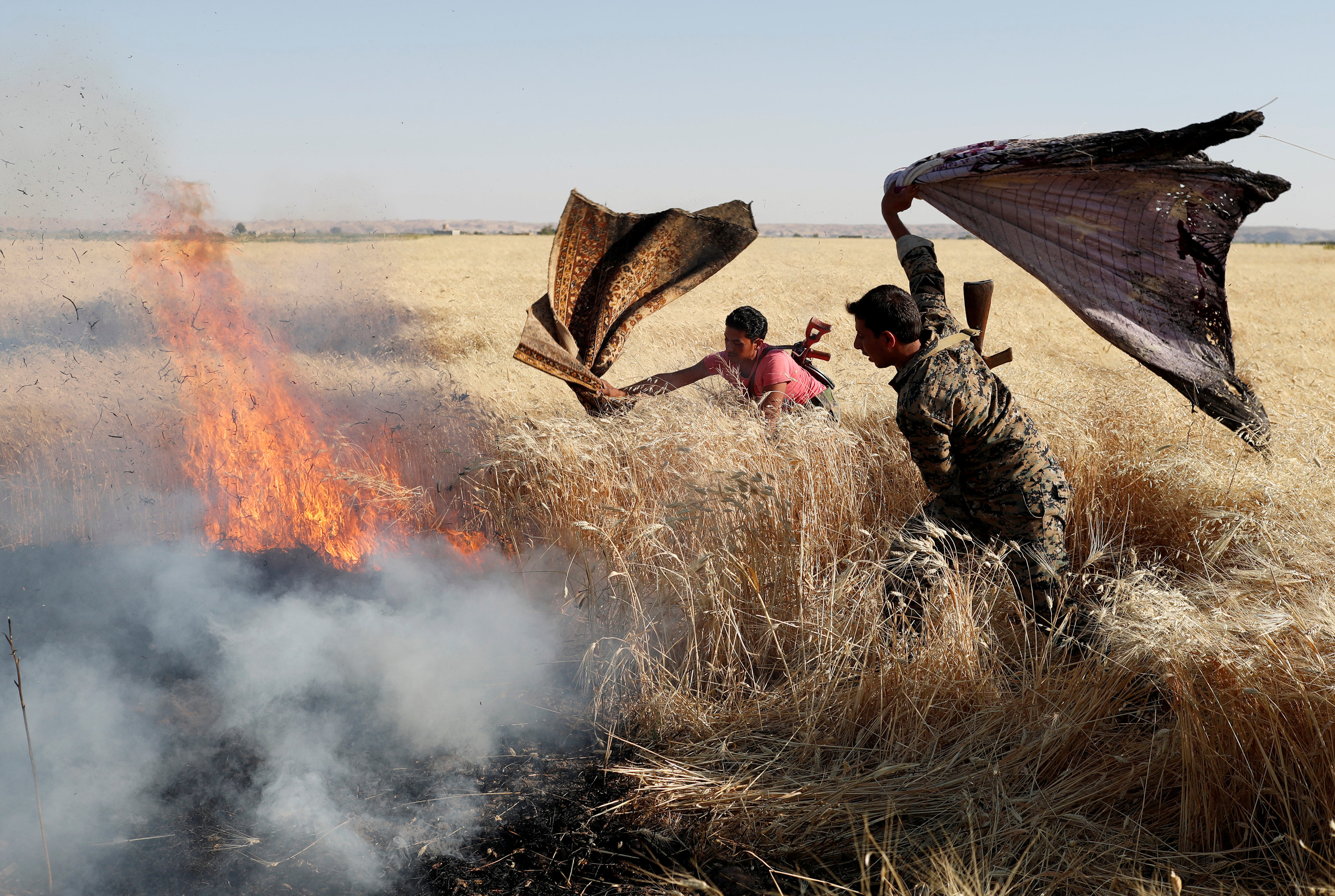
Kurdish fighters extinguishing fire in a wheat field after clashes with ISIS – December 1, 2017 (Reuters)
American bases contributed to the stability of the region
The American bases deployed in the east of the Euphrates are seen as a safety valve and a favorable factor in stabilizing the region and creating economic conditions, at a time when most of the Syrian territories have been witnessing battles that have decreased in the second half of 2018.
The United States established its first air base inside Syria, in the southeast of Rmelan city in al-Hasakah, in November 2015, after turning Abu Hajar Agricultural Airport into a military airbase, providing helicopters as a first step in the coordination of its operations against ISIS in Syria and Iraq.
The United States equipped the airport with technicians and extended its runways to a length of 2,500 meters.
The second base is located in the town of Kharab Ishq, near the city of Kobanî (Ayn al-Arab), 90 km away from the north of the city of Raqqa, which is controlled by the Syrian Democratic Forces (SDF) and is located about 35 km away from the Turkish borders.
The base includes warplanes and a military logistics center. Carlton Everhart, a Colonel General in the US Air Force, said in April 2017 that the airport “will play an important role in transporting supplies, equipment and personnel.”
According to Enab Baladi sources, the United States manages three other military sites in al-Hasakah. The first site is located in the village of Tell Beydar in the north of the governorate. It includes soldiers of the US Special Forces. The second site is located in the south of al-Shaddadi, and it to supports the operations of the SDF. As for the third site, it is located in the agricultural area of Tell Tamer on the Syrian-Turkish borders. This is in addition to bases in Sarrin in the west of Kobanî.
The United States also runs military bases in both Raqqa and Manbij.
The US-led International Coalition established, in May 2016, al-Tanf Base under British-Jordanian supervision on the Jordanian-Iraqi borders. The base was the start of operations against ISIS in the region.
Military factions in the Free Syrian Army had been trained inside the base, which is considered a joint operations room. The most prominent of these factions are the Revolutionary Commando Army, Lions of the East Army, and the New Syrian Army. This base’s management is now limited to logistical matters, after al-Assad’s forces and their supporting militias had taken control over the base’s surrounding area, in June 2016, before handing it over to al-Bukamal.
Reconstruction of Eastern Euphrates: A process threatened by hindrance
After its formation in 2014, the International Coalition pledged to restore stability to the region from which ISIS would be expelled, especially the Eastern Euphrates region in northeastern Syria, which witnessed a ground military presence and military bases of the International Coalition forces.
In mid-August, the United States suspended its contributions to the “stabilization” projects in Syria, estimated at $ 230 million, after Washington received pledges from Gulf countries to contribute with $ 300 million to implement those projects.
This is added to more than $ 400 million which the International Coalition said it had provided between June 2015 and February 2018 for development projects aimed at restoring stability through 1,200 projects that were under implementation, including securing major water treatment plants, and power stations, building schools, in addition to other agricultural and industrial projects.
With US President Donald Trump announcing the withdrawal of his forces from Syria, the fate of the region’s restoration of stability and reconstruction is uncertain, amid fears that the US-led coalition will disengage from its commitments to Syria.
Raqqa is a model
The need for development projects is even more urgent in the city of Raqqa, which witnessed intensive military operations with support from the International Coalition in October 2018, that have resulted in the destruction of more than 10,000 buildings, according to United Nations figures.
Mustafa al-Abd, a member of the Raqqa Civil Council, which was formed in mid-April 2017, as an administrative unit in the Self-management told Enab Baladi that the rate achieved by the process of restoring the stability of the region in eastern Euphrates does not exceed 20%.
Al-Abd thinks that hard work is needed so that the region becomes as it was before, in light of the horrors of the war left by the Islamic State and the war against it.
In the midst of talk about the US withdrawal, there was news of the suspension of American development projects in the region, but Abdul Jalil Delo, the director of one of the projects supported by the US agency USAID in the city of Tabqa in the governorate of Raqqa, denied the existence of a suspension decision by the supporting organization, nor does he see the existence of any decisions concerning this aspect.
However, in an interview with Enab Baladi, Delo said that the decision to withdraw could hamper the pace of time in order to start new projects and achieve the region’s recovery and redevelopment.
On December 22, the Raqqa Civil Council held a meeting to discuss the future of the region after the United States announced the withdrawal of its forces, but in the meantime it stressed the continuity of the implementation of development projects and achieving the reconstruction objectives.
One of the most prominent organizations active in the region in coordination with the International Coalition in the context of stability and redevelopment of the regions of northeastern Syria are the United Nations Development Fund (UNDP) and the United States Agency for International Development (USAID), which work in coordination with local organizations or with administrative councils and bodies of the Self-management.
The work of these organizations is concentrated in the city of Raqqa, which is the Syrian city most heavily damaged by ISIS and the war against it.
Amnesty International held the international coalition responsible for destroying civilian infrastructure during the war against the Islamic State in the city.
Rabi, a resident of Raqqa who is a former volunteer in the team of the United Nations Children Emergency Fund (UNICEF), told Enab Baladi in August 2018 that the delay in the process of supporting and restoring stability in Raqqa concerns several issues, the most important of which is the security situation, the interventions of the Self-management and the Raqqa Civil Council in the work of organizations.
Rabi pointed out that the fear of mines, which have not yet been removed, has hindered the work of the organizations within a clear and stable time frame.
This was reflected in a USAID report in partnership with the United Nations, issued in early December, on the status of services in the city.
For example, the report noted that access to water was still limited, with only one fully functioning health facility out of 77 in the governorate.
Bureaucracy disrupts development
Luqman al-Mulla, a member of the administrative board of the Self-management, said that the funds provided by donor countries in support of stability in the region are subject to bureaucratic procedures for several reasons, including the work of each country separately in the implementation of projects to which it was committed in front of the rest of the coalition members.
In addition, each country has its own operational policies and agendas in the management of its projects, how to select contractors to implement them, and the instability of this agenda due to the succession of governments and their change in these countries, which may affect its program of development and humanitarian support.
The United States is the largest donor of humanitarian aid in the world. It has provided through USAID around $ 7.7 billion of humanitarian aid to the Syrian people since 2011, of which more than $875 million under stability, and $ 200 million in 2017 alone.
Relations in the implementation of development projects are divided into three forms of partnerships: a partnership with official international organizations and the United Nations, often directed to emergency and relief responses, partnerships with non-governmental organizations based on their personnel or local staff. The third type is the partnership with the administrative bodies that constitute the administrative authority of the target area.
Luqman sees that this confusion in partnerships reflects a disparity in objectives and priorities, wastes efforts, and produces significant differences in the implementation of recovery projects in various sectors.
if you think the article contain wrong information or you have additional details Send Correction
النسخة العربية من المقال
-
Follow us :
Most viewed
- Turkey moves to deploy air defense system in Syria
- Intentions for popular resistance amid Israeli escalation in southern Syria
- SDF to withdraw from Aleppo neighborhoods following agreement with Damascus
- Washington's conditions raise questions about its openness and goals in Syria
- Syrian returnees celebrate first Eid after liberation












 Expressive photo, modified by Enab Baladi
Expressive photo, modified by Enab Baladi





 A
A
A
A
A
A
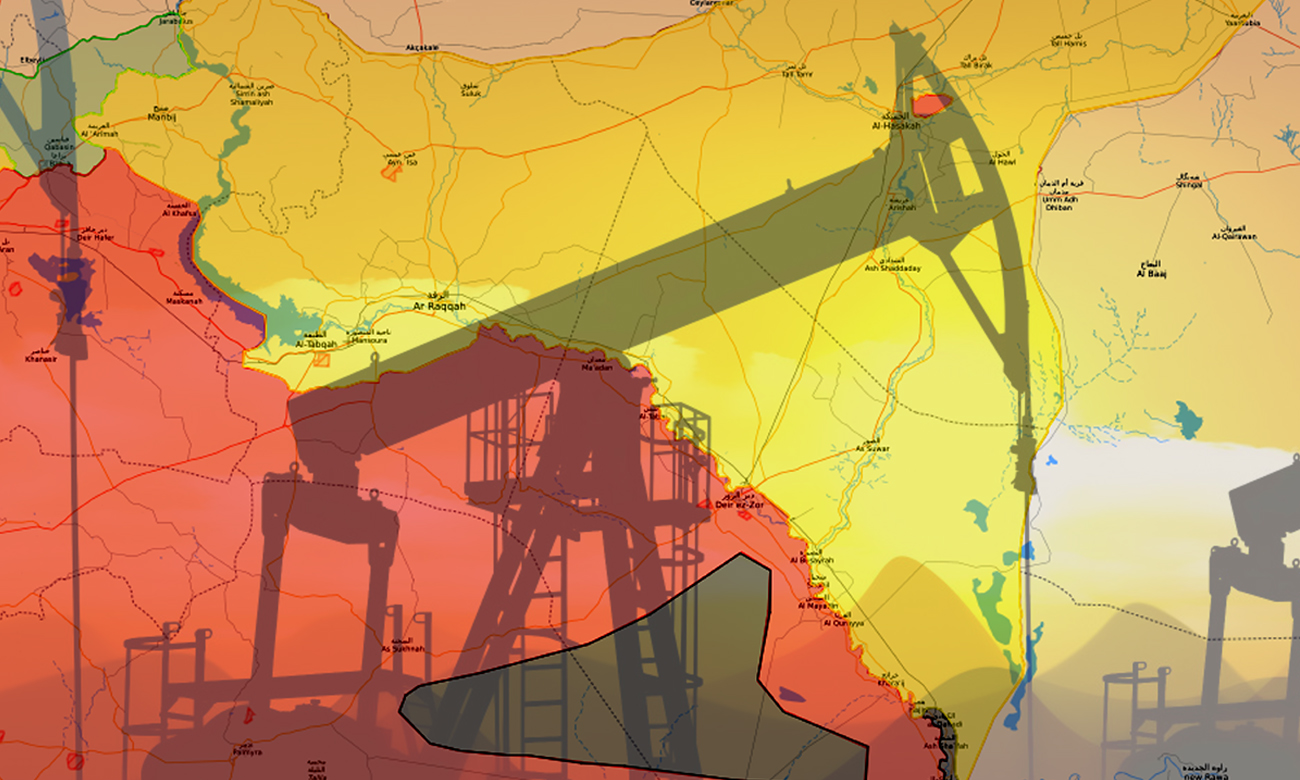
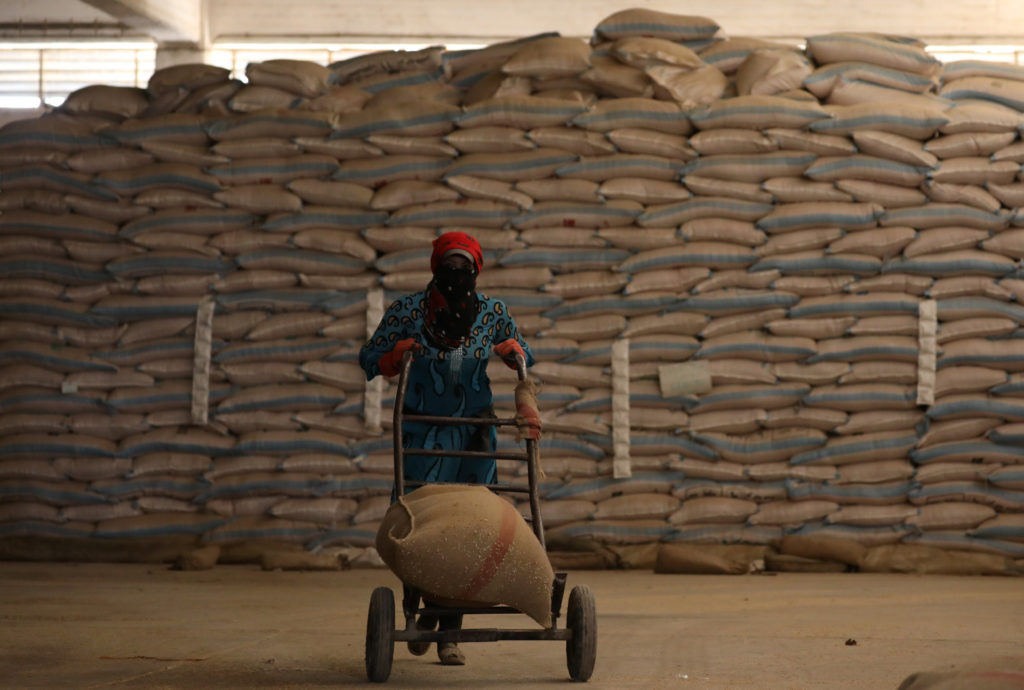
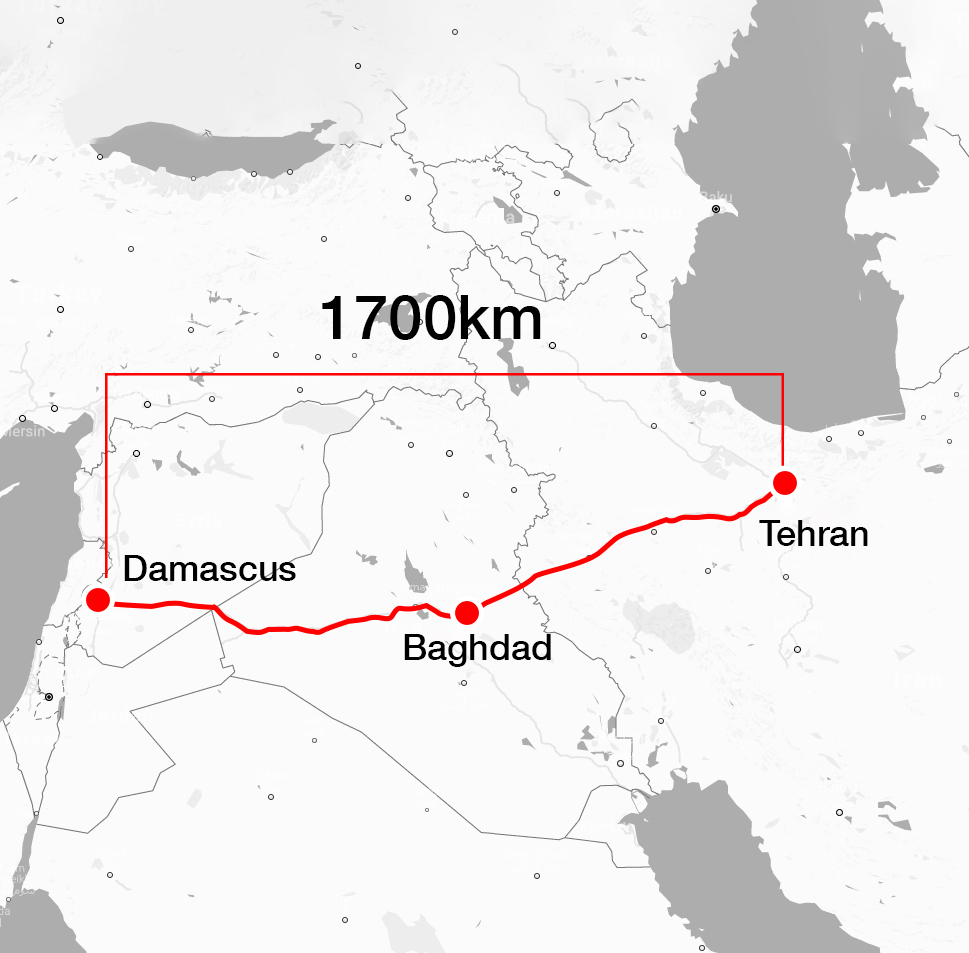
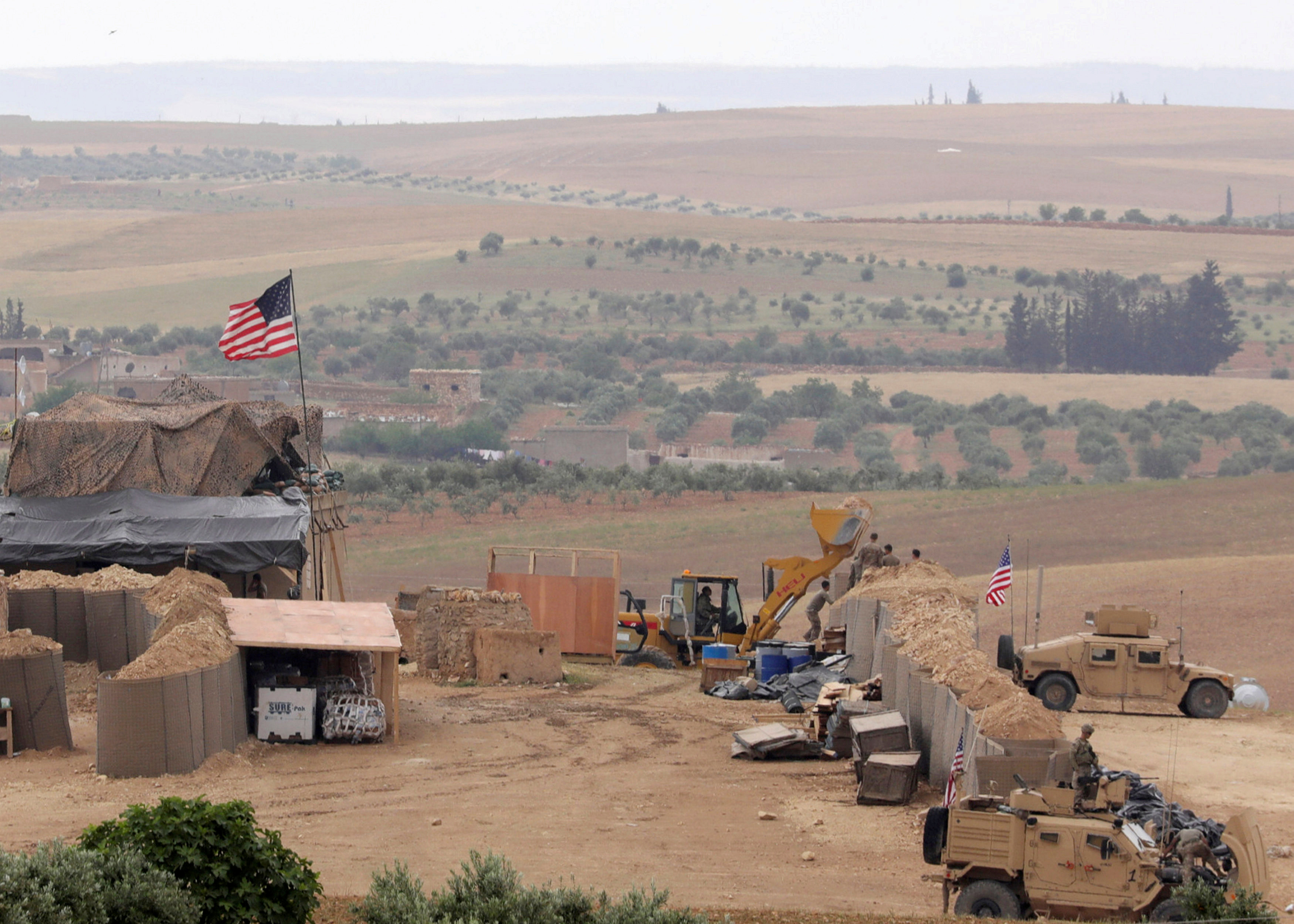
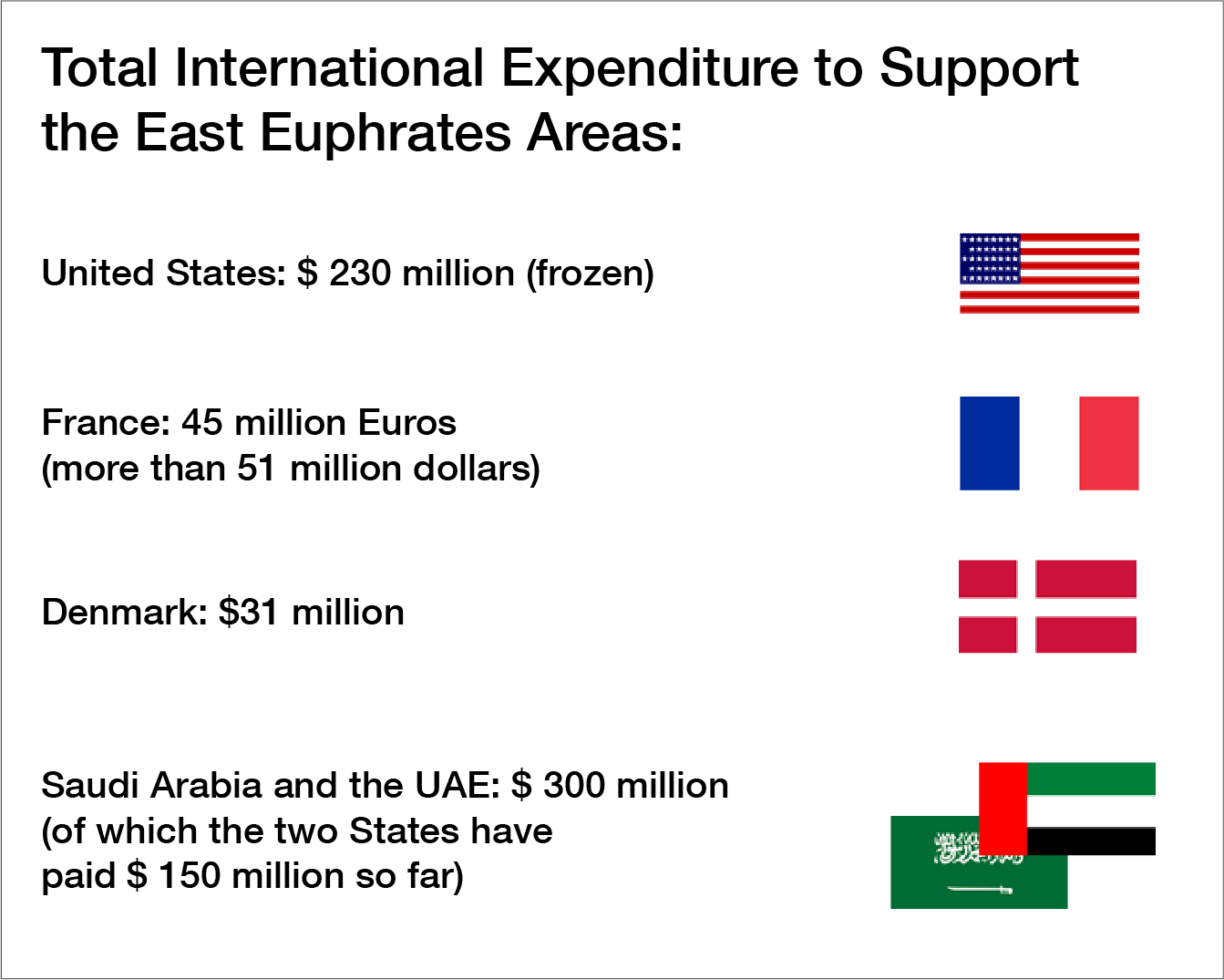





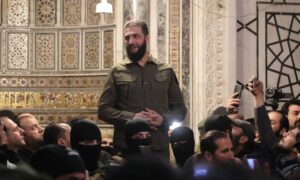
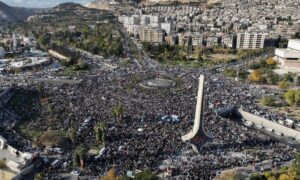
 More In-Depth
More In-Depth